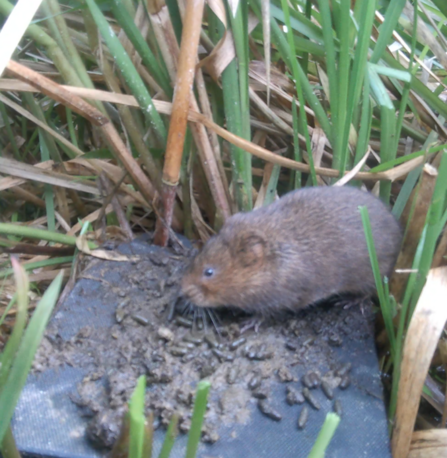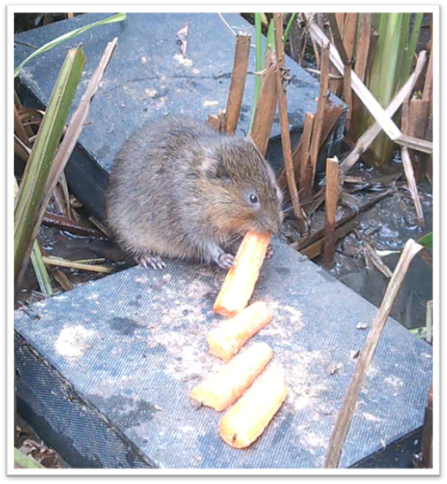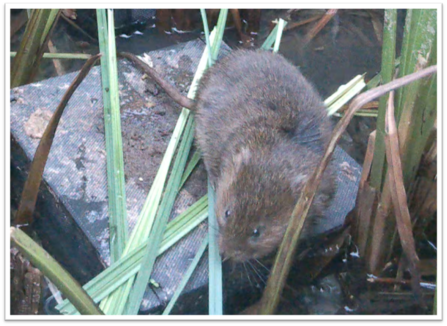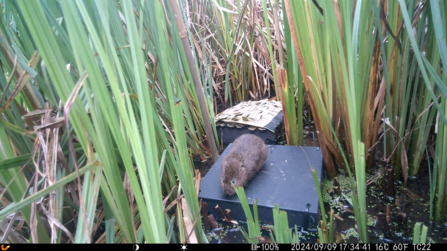Linda Butterfield developed an enthusiasm for Water Voles when she volunteered with the Trust. Inspired by this and local success with the species growing over the seasons, Linda undertook a Masters project to inform future Water Vole monitoring guidance. Here, in this guest blog, Linda shares how the project developed and what her findings were.
The Lea Valley is a multi-use, nature-rich corridor in which Water Voles are bucking the trend of continued national decline. This charismatic species demonstrates remarkable resilience when their riparian habitat is well maintained and predation by American Mink is effectively controlled.
I first learned to survey Water Voles under the expert guidance of the Wildlife Trust’s Water Vole Officer, Josh Kalms. In the Spring and Autumn, Josh and a team of volunteers don wellies or waders, part the vegetation with long sticks and peer into the undergrowth of rivers, lakes and ditches. We are looking for piles of vegetation cut by water voles with a typical 45o angle or accumulations of greenish tic-tac shaped droppings known as latrines. Tennis-ball sized round holes in the top or edge of soft banks or woven rugby-ball sized nests made of stripped sedge show that water voles have made a home where we are searching. My enthusiasm for this species and our local success grew over the seasons. In collaboration with Josh and my Masters Project Supervisor, Jim Littlemore at Anglia Ruskin University, I undertook a project to inform future water vole monitoring guidance.





